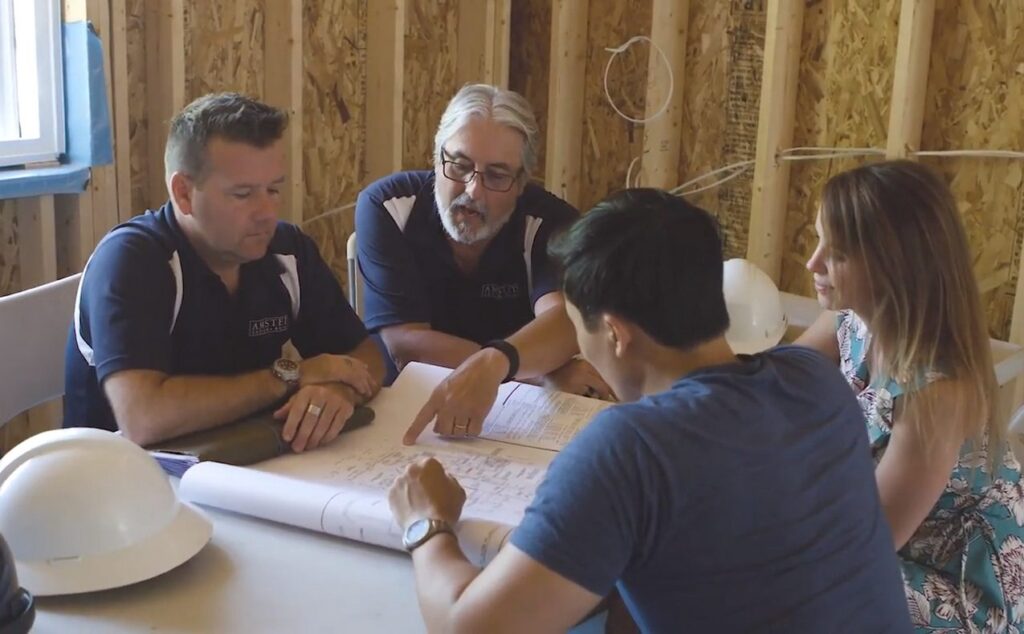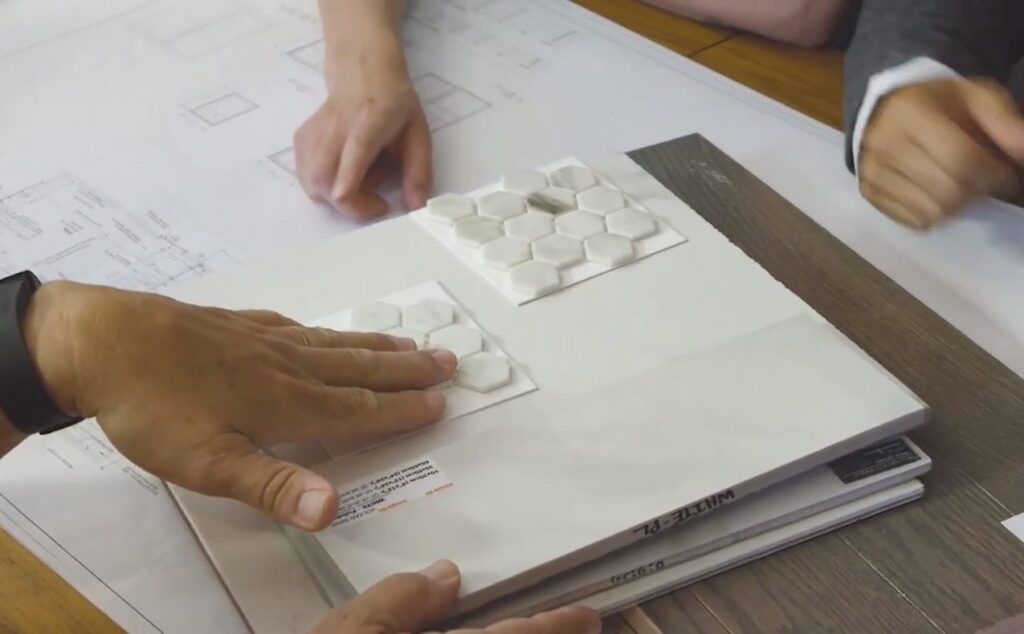While common to us (it’s in our name after all), design-build isn’t a term everyone is familiar with. But if you’re considering a renovation or custom home, it’s a method of delivering a construction project that you should look into.
Design-build can offer the busy homeowner huge benefits. It takes the best aspects of having a professional project manager, an integrated design team and licensed professionals and ties them together with a trusted adviser; a single contact on whom a homeowner can rely on through what, for the majority, will be the most expensive undertaking of their lives.
Design-build: What is it, really?
To break it down, a design-build company will include everything needed to get a construction project completed from start to finish. From the first “napkin sketch” with a designer to the moment the homeowner takes the keys post-construction, and even beyond through the warranty period, a single company will take care of the whole process. Now, that doesn’t necessarily mean everyone on the job will be an employee — modern construction benefits from too many specialized trades to avoid some subcontractors. However, all of them will be trusted partners with strong relationships to the design-builder.

In other common construction methods, an independent designer might be the first point of contact. A homeowner could approach an architect or other professional to prepare drawings for their project. The designer could stay on to act as an adviser, but it’s often the case that once the drawings are done, and perhaps some permits are taken care of, the designer is off to the next project.
The homeowner would then take the drawings to various project managers or general contractors to price the drawings and undertake the construction. That selection might be based on the quote, but could be some other factor such as quality of work or professionalism.
Now the homeowner has a builder and a designer working for them separately, so who co-ordinates and who owns the timelines of the project? What if the project never gets to a builder because no quotes come in that meet the homeowner’s budget? Who pays for the cost of revisions to get back on budget and who actually makes those revisions?
In design-build, the first point of contact will be with a representative of the company who answers those questions. It could be a company owner, a designer or a professional project co-ordinator, but whatever the case, someone is there from the very first meeting to act as an adviser and keep timelines and budgets on track. If not the first contact, the designer will be brought in very early on.
In smaller companies, the designer may be a trusted subcontractor who works closely with the design-builder. In larger firms, the designer may be an employee and therefore even more integrated with the construction team. In either case, the designer is a qualified and insured professional.

They may carry other certifications or licences but the minimum in Ontario is a Building Code Identification Number or BCIN. The BCIN is used by the Ministry of Municipal Affairs and Housing as well as local building departments to keep track of what a particular designer is qualified to do. The ministry makes the registry public so anyone can do a check and it includes not just designers, but municipal building officials as well. If the designer is an employee of the design-builder, then the company will have its own BCIN and be registered as a design firm.
A design-builder will also employ some sort of co-ordinator or estimator. Often it will be this co-ordinator who acts as the main point of contact for the homeowner — that single guide to get from one end of the project to the other. They are also the person responsible for making sure that costs are taken into account in the design so that the project considers budget from the very beginning.
A design-builder will also employ project managers. They will lead the team on the site, trusted trades and professionals will report to them, and they will be responsible for the schedule and ongoing budget.
Depending on the company and its own specialities, different parts of the construction team may be employees. There are a few specialists who require very specific licensing and insurance, and these will almost certainly be trade partners.
The last thing that design-build will include is the warranty. A two-year warranty is a minimum for membership in the RenoMark program run by the Canadian Home Builders’ Association, so most design-builders will be able to provide at least that.
So, what is design-build, exactly? It’s a construction process where a homeowner can hire a single company combining experts in all aspects of the building industry to deliver their project on time and on budget.
Design-build benefits

The stalwart industry guide Architect’s Studio Handbook notes that design-build can produce a building faster and at a lower cost thanks to the design and construction teams being merged. Studies by the Design-Build Institute of America have confirmed that observation. Design-build has faster delivery and construction times, as well as less schedule extensions, than other types of construction delivery.
It can also be said that the adversarial relationships that arise from a bidding process are almost eliminated. In a bidding situation, there can be benefits to the builder in finding mistakes the designer has made. Those costs and inefficiencies may not be immediately obvious, but they appear later as change orders and missed schedule deadlines.
Conversely, with design-build the designer, co-ordinator, an estimator and members of the construction team work together through the development of all phases of a project’s drawings. This is the key to the benefits of design-build. Even as initial concepts are developed, the project cost can be estimated. A price can be estimated without needing to wait to bid drawings, or having the builder come back for changes.

The time from “napkin to key” can be dramatically decreased as revisions to the drawings can be make dynamically while estimating is consistently updated. The closer a design gets to the final concept, the more costs are further refined by bringing in more and more team members from the construction side, including those trusted specialists.
Input from expert plumbers, electricians and HVAC installers can all be incorporated into the final set of drawings upon which the build contract will be based. No need to wait for bidders to feed back that the costs are going to be double what was originally planned — the cost and design are refined simultaneously.
Once in construction, the designer also remains as part of the team. Questions may arise from a city inspector or unseen site conditions, especially in a renovation, which may need quick input from the designer. In those cases, the design members of the team are easy to reach and always available to come in to assist. Information brought back from sites is also consistently relayed to the designer, allowing for constant improvements.
Since the involvement from construction starts early on, there are less likely to be issues with miscommunication or misunderstanding. A framer isn’t losing time guessing on site when they were involved during planning, and air ducts aren’t an afterthought leading to ugly bulkheads since the HVAC professionals and designer met while the job was still on paper.
The benefits of less time and lower final costs are huge for the homeowner, while the design and construction teams benefit from continual on-the-job education from working closely with each other.
Is it for me?
For someone with the time to co-ordinate disparate trades, the talent to manage the complex schedules, or the experience to navigate through the red tape of a city’s permit approval and inspection process, then perhaps design-build isn’t the ideal choice. But for the busy family, a time-starved professional, or someone who just has hobbies they enjoy having time to do, design-build offers a peace of mind that no other construction method can match.







